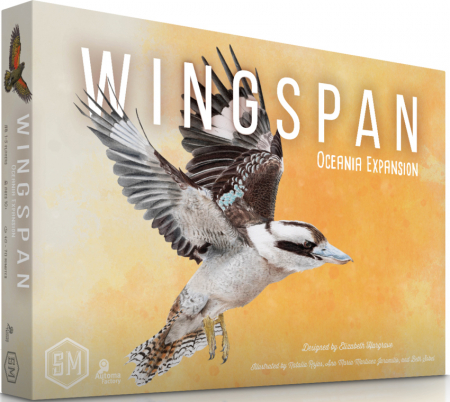

The new boards feature a few new symbols and boost the majority of the actions, at least in the initial columns. With up to 15 points on offer these aren’t bonuses to be ignored either, thus the choices instantly become meaningful. Then, bonuses are awarded at the end of the game for how players have spent the nectar. The main way to get it is from the new dice, though a number of card abilities allow players to obtain it.
Wingspan oceania how to#
Firstly, nectar is discarded at the end of each round – so you need to plan ahead of how to use it or you’ll lose it. There are additional choices involved as a result though that make nectar a more thinky element of the game. In some ways it makes the game easier, with the wild resource making playing birds that bit easier. On the surface the addition of nectar, the new wild resource, looks in line with the rest of the game. With the potential to gain easily 5+ points these are strong powers that players can work into their plans. These can see vast numbers of eggs laid (depending on the habitat or nest types), unspent resources cached onto cards and even additional birds played. From the new birds the new twist are yellow Game End abilities, naturally only triggering after the final turn of the game. Introducing new player boards, dice, and an additional resource – all before the large deck of 95 Oceania birds. Of the two there is no doubt that Oceania makes more of an impact upon Wingspan. This is where new combos and such become apparent and I look forward to continuing to enjoy learning new ways to exploit the card combos to great effect. After a few games the buzz of the newness slightly wears off and players will be back to picking bird cards primarily for their powers and points, not what bird they depict. As with picking your favourite birds in the first few plays of the base game, these can be a fun distraction from getting points – as players look to pick up and play the new birds. With it however cramming it in becomes impossible without lifting the lid.īeing from the UK there is something nice about seeing birds in the deck that you see when out and about, rather than those only seen on holiday or in a zoo. Note that without this custom market tray you can just squeeze the European expansion content into the base game box. This is just about needed with the new cards from the European expansion, though only really becomes necessary when you also own the Oceania expansion too. Included is a new custom market tray, featuring the same design as in the base game but in a purple/lilac colour scheme.

Ranging from new ways to tuck cards, lay eggs and more, these are often relatively powerful abilities – certainly in comparison to the brown “When Activated” abilities. The timing is important as some help or hinder the player towards the round objectives, though like all other abilities these are optional. Unsurprisingly, these trigger at the end of each round, prior to when the round objectives are scored. As for the new birds, the major difference on an abilities front are the new teal “Round End” abilities. The smaller of the two expansions is the European expansion, adding 81 new bird cards, 5 new objective cards, 5 new double sided round goal tiles and a second bird tray. However, are these expansions just for the new birds? Let’s find out! While the European expansion brings in the likes of Warblers and the common Blackbird, the Oceania expansion sees the quirky Kiwi and colourful Finches shuffled into the deck. Elizabeth Hargrave and Stonemaier Games have since released two expansions for Wingspan adding birds from two new regions of the world. We loved it when we reviewed it, it’s got reprint after reprint and it won most awards possible for a hobby board game. There is no doubt that Wingspan is a popular board game.


 0 kommentar(er)
0 kommentar(er)
